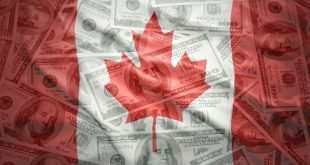The US dollar’s rally and the drop in equity prices continue to be in the spotlight. The New Zealand NZD Business Confidence survey and Australian retail sales are two important readings to be watched during the Asian session. Later, attention will turn to Spain’s and Germany’s early September inflation data. The consumer and business confidence numbers for the Eurozone will also be made public. Weekly Jobless Claims and a fresh estimate of Q2 GDP are two noteworthy US announcements.
Economic Data
Contrary to predictions of a 0.5% decrease, economic statistics released on Wednesday showed a surprising 0.2% growth in durable goods orders for August. The weekly Jobless Claims report, the third adjustment of Q2 GDP statistics, and data on pending home sales are among the data releases scheduled for Thursday.
Estimates for third quarter corporate spending will rise as core capital goods shipments increase and durable goods orders surpass expectations. However, the data becomes far less interesting after accounting for a sharp increase in defence spending as well as sharp downward adjustments.
Key Development
The US Dollar Index increased by 0.45%, making it the fourth day in a row that it has increased. It also reached its highest closing level since November. Positive US data, higher Treasury yields, and market-wide risk aversion all contributed to the dollar’s gain.
At 4.60%, the 10-year Treasury yield reached its highest level since 2007. At the same time, US markets ended with mixed results, highlighting the general unfavourable mood. The NASDAQ increased by 0.22% while the Dow Jones fell by 0.20 percent.
A level below 1.0500 was reached by the EUR/USD, which had not been seen since January, as its drop quickened. Preliminary Consumer Price Index (CPI) numbers for September are slated for release in Spain and Germany. Spain’s annual inflation rate is predicted to pick up, while Germany’s is predicted to decline significantly. These preliminary inflation rates can have an effect on the markets and are important in determining monetary policy expectations. In addition, Eurostat will present its report on business and consumer sentiment.
The petering out of two more significant base effects—the fuel discount from last summer and the 9-Euro ticket—will cause Germany’s CPI headline and core inflation rates to decline more significantly in September. In this context, economists estimate that the two effects outlined above may have increased year-over-year prints between June and August by up to 34 pp. In particular, a 0.35% mom increase in the headline CPI is expected, which would result in a significant reduction in the yoy rate to “just” 4.6%.
The USD/JPY pair has moved above 149.50 due to the upward momentum brought on by higher rates. The Japanese government may be considering verbal interventions or even more severe measures to combat the weakening of the Japanese Yen now that the 150.00 mark is within approach.
For the sixth day in a row, GBP/USD maintained its negative trend, though the rate of decrease eased. Before bouncing back to 1.2140, the pair hit a low of 1.2110. Despite the market’s apparent risk aversion, the USD/CHF exchange rate increased and topped 0.9200. The Relative Strength Index (RSI) is at a record high of 85.50 on the daily chart.
The risk-off mood had a negative effect on the Australian Dollar (AUD). As long as it is below the 0.6355 level, the AUD/USD pair will continue to see bearish pressure. The price of the pair closed at its lowest level since November. Australia is anticipated to announce a 0.3% increase in retail sales for August on Thursday.
Similar to the US Dollar, the New Zealand Dollar (NZD) fell against it for a second day in a row, although the pair’s price managed to hold above the 0.5900 mark. The New Zealand ANZ Business Confidence survey will be made public on Thursday.
Other major currencies underperformed the Canadian Dollar (CAD), which led to a slight drop in the USD/CAD rate to 1.3500. The Loonie was boosted by the increase in crude oil prices. WTI crude oil’s price increased by 3.50% and surpassed $93.50.
The price of gold, in contrast, fell below $1,900 and plummeted to $1,872, hitting its lowest point since March. Silver dropped 1.25% to $22.40, and now traders are looking to monthly lows and the $22.00 medium-term support.
Also Read:
GBP/USD declines further on stronger dollar
GBP/USD declines further on stronger dollar
Wall Street dips as Treasury yields continue surging
Which recession indicators can investors safely watch?
 Noor Trends News, Technical Analysis, Educational Tools and Recommendations
Noor Trends News, Technical Analysis, Educational Tools and Recommendations





